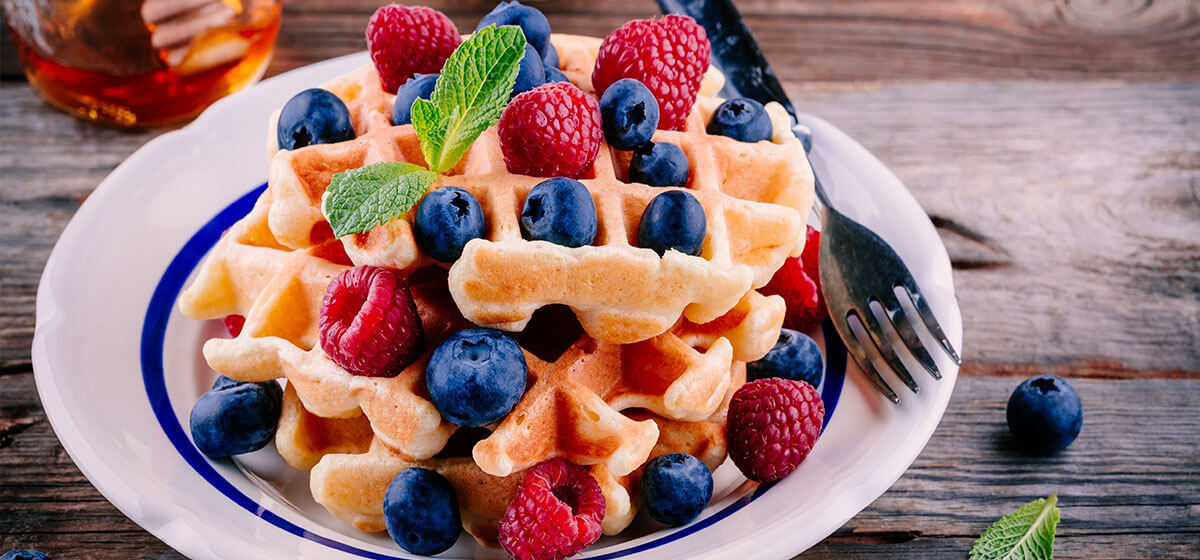Easy & Healthy Food Swaps for Weight Loss

If the eggnog and cookies you indulged in over the holidays left you feeling like you need the Jaws of Life to escape your favorite jeans, never fear. This new year, you can trim calories with a few easy changes you’ll barely notice.
Sound too good to be true? Try it and see. Erin Stamper, a registered dietitian nutritionist at Baptist Health Floyd, suggests a few simple switches and strategies.
• If you eat waffles, pancakes or toast for breakfast, use mashed berries on them instead of syrup or jam.
Half a cup of berries is about 40 calories, compared with a quarter-cup of maple syrup, which packs 216 calories.
“As a bonus, the berries’ fiber keeps you feeling full longer,” Stamper says.
• “Instead of topping chili or other soups with sour cream, give them a dollop of Greek yogurt. A quarter-cup of sour cream is 115 calories, carrying 12 grams of fat, most of that the artery-clogging saturated kind,” Stamper says. “By contrast, a quarter-cup of nonfat Greek yogurt has just 30 calories.
“With yogurt, you have protein, calcium, vitamins. You’re getting more bang for your buck, but you’re still getting that creaminess in the soup.”
• Fall and winter are casserole season. When topping a casserole, don’t use crumbs from white bread. Instead, grind high-fiber cereals and use that.
“You’re going to save about 150 calories per half-cup serving,” Stamper says, “and you’re going to get 5 to 9 grams of fiber per serving,” which will keep you full longer.
• When making cakes, muffins and other baked goods, use canned pumpkin instead of oil or butter.
A half-cup of oil or butter has 800 calories; the pumpkin has just 40.
Applesauce and banana are other alternatives to oil and butter, Stamper explains. “It’s a good way to make a treat that is still somewhat nutritious, but you are still getting that sweet tooth satisfied.”
Use an equal measure of pumpkin, applesauce or mashed banana when making the substitution.
• When making a salad, pick just one “extra.” Instead of adding nuts, avocados, croutons and cheese, choose one to keep it interesting and scrap the rest.
“It’s kind of like accessorizing yourself,” Stamper says. “You don’t wear all your jewelry every day.”
Of course, feel free to load up on vegetables, and try keeping your salad dressing on the side, dipping your fork with each bite. That way you get a bit with each morsel.
• “Limit alcohol consumption to one or two days a week and have only one or two drinks a night,” Stamper says. “Alcohol calories can add up.”
To further limit the caloric intake, she advises sticking to beer or wine rather than mixed drinks. That way, you’ll know each drink will run around 150 calories.
If you crave a cocktail, ask for seltzer or club soda as mixers instead of juice or a soft drink, which would add 140 calories per cup.
• Drinking a glass of water before a meal can help curb hunger and make you feel more satisfied during and after the meal.
To figure out how much water you need, divide your body weight in pounds by two and drink that many ounces of water each day. For example, if you weigh 150 pounds, you should drink 75 ounces of water per day. You may need more if you’re active or somewhere hot.
• Use a smaller plate and leave second helpings in the kitchen. A smaller plate tricks the mind into thinking you’re eating more than you are, Stamper says, while a larger plate sends the message that it must be filled. And when you’re eating at home, leave serving dishes in the kitchen rather than in an easy-to-reach spot on the table.
Looking for more easy food swaps and healthy recipe ideas? Check out the Weight Management section of the Baptist Health for You blog.



